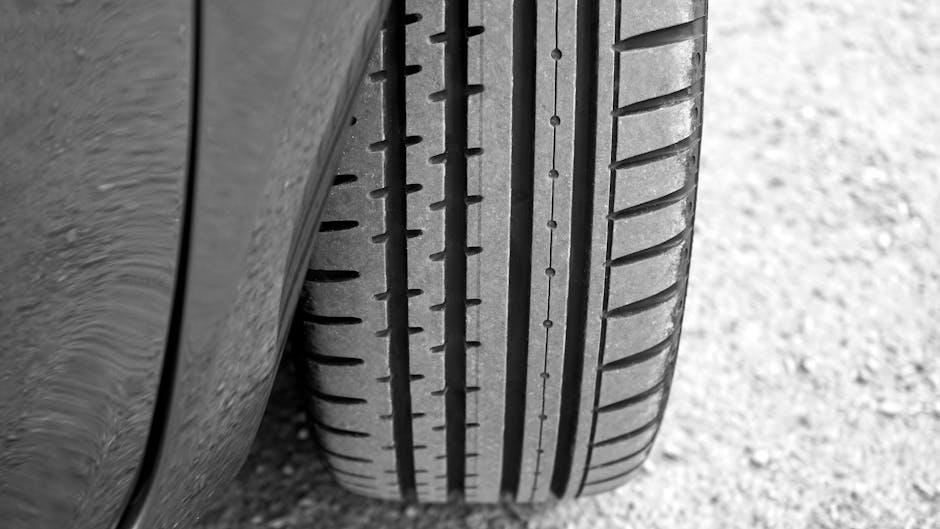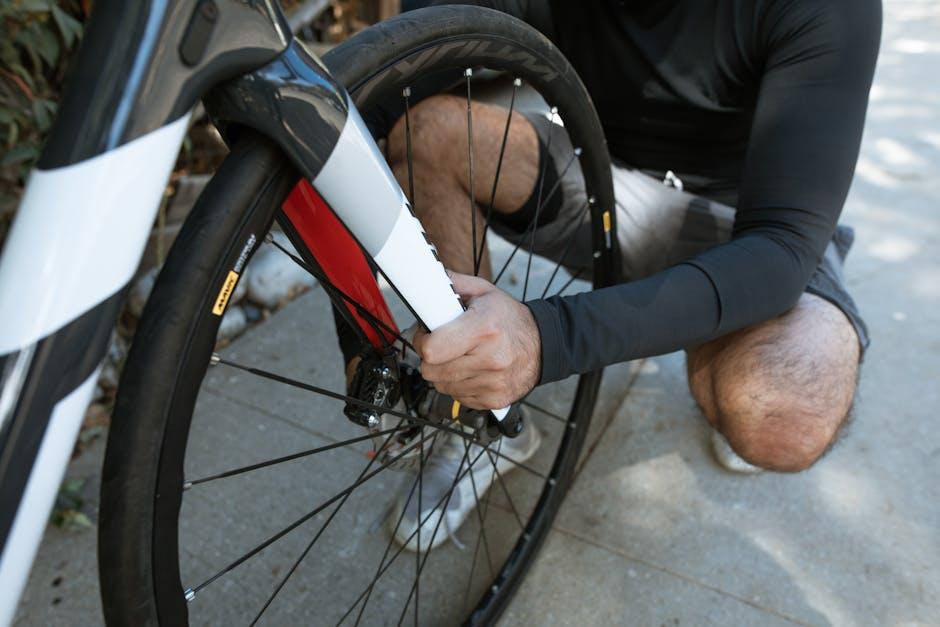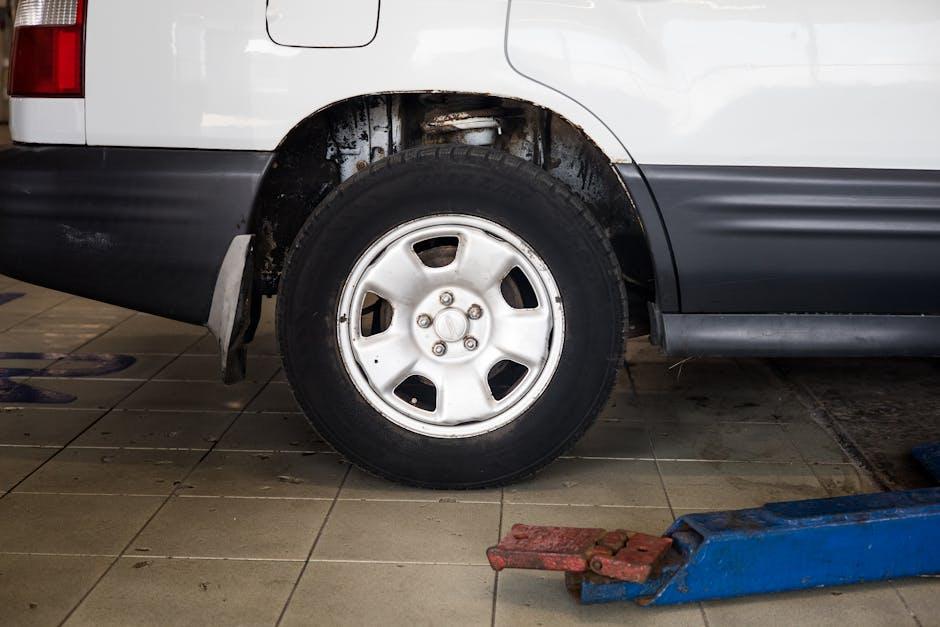Imagine your car as a finely tuned dancer, gracefully moving along the road with every step perfectly aligned. Just as a dancer’s performance depends on precise movements and balance, your vehicle’s wheels require careful alignment to ensure smooth handling, safety, and tire longevity. But how often should this crucial alignment be checked? In the intricate choreography of driving, understanding the right timing for wheel alignment inspections can keep your car gliding effortlessly, saving you from unexpected missteps on the road. Let’s explore when and why wheel alignment checks matter, and how they contribute to a seamless driving experience.
Table of Contents
- Understanding the Importance of Regular Wheel Alignment Checks
- Signs Your Vehicle Needs a Wheel Alignment Inspection
- Factors That Influence How Often to Schedule Wheel Alignments
- The Role of Driving Habits in Wheel Alignment Frequency
- How Seasonal Changes Impact Wheel Alignment Needs
- Expert Recommendations for Maintaining Proper Wheel Alignment
- Q&A
- Concluding Remarks

Understanding the Importance of Regular Wheel Alignment Checks
Regular wheel alignment checks are critical for maintaining the optimal performance and safety of your vehicle. Misaligned wheels can cause uneven tire wear, leading to premature tire replacement and increased road noise. Moreover, poor alignment affects your car’s handling, making steering more difficult and potentially hazardous, especially on wet or slippery roads. Staying on top of alignment ensures that your vehicle drives smoothly and that your tires last longer, giving you better value and peace of mind on every journey.
Many drivers overlook the subtle signs that indicate it’s time for an alignment check, such as the steering wheel pulling to one side or a crooked position while driving straight. To keep your car in perfect balance, consider scheduling an alignment check as part of regular maintenance, especially if you frequently drive on rough roads or after any incident of impact like hitting a pothole. Below is a simple guideline on when to consider alignment checks:
- Every 12,000 miles or once a year – a general recommendation for most vehicles
- After suspension or tire replacement – ensure new parts work harmoniously
- Following hitting curbs or potholes – impact can shift wheel angles
- When noticing uneven tire wear – a sign of misalignment
- If your steering seems off-center – steering wheel should be straight when driving straight

Signs Your Vehicle Needs a Wheel Alignment Inspection
When your vehicle starts to behave unusually, it might be trying to tell you that a wheel alignment inspection is overdue. One of the most common signs is uneven or rapid tire wear. If you notice that the edges of your tires are wearing down faster than the center, or one tire is distinctly more worn than the others, it’s a clear indication that your wheels are misaligned. Additionally, your car pulling to one side while driving on a straight road can disrupt your control and safety, signaling the need for professional attention.
Other subtle but important symptoms to watch for include:
- Vibrations in the steering wheel even when driving smoothly
- Loose or imprecise steering, making it harder to keep your vehicle on a straight path
- Steering wheel not centered when driving straight
| Symptom | Possible Cause | Recommended Action |
|---|---|---|
| Pulling to one side | Misaligned wheels or uneven tire pressure | Check alignment and tire pressure |
| Steering wheel vibration | Wheel imbalance or misalignment | Balance wheels, wheel alignment inspection |
| Uneven tire wear | Incorrect alignment angles | Wheel alignment service |

Factors That Influence How Often to Schedule Wheel Alignments
Various external and driving conditions significantly affect how frequently wheel alignment checks should be scheduled. For instance, regular city driving on smooth roads typically requires fewer alignments compared to frequent off-roading or driving on rough, pothole-ridden surfaces. Unexpected impacts, such as hitting curbs or speeding over road debris, can quickly misalign your wheels, necessitating more immediate attention. Additionally, changing seasonal weather conditions, which influence road traction and vehicle handling, also play a role in determining alignment frequency.
Beyond terrain and driving habits, other factors like the vehicle’s age, tire wear, and suspension health contribute to alignment needs. Older vehicles or those with worn tires often show signs of misalignment sooner. It’s important to keep an eye on symptoms such as uneven tire wear, pulling to one side, or a crooked steering wheel when driving straight. Here’s a simple guide illustrating how these factors influence wheel alignment frequency:
| Factor | Effect on Alignment Schedule | Recommended Check Interval |
|---|---|---|
| Rough Road Conditions | Higher risk of misalignment | Every 6 months |
| High Mileage Daily Driving | Moderate wear and tear | Annually or every 12,000 miles |
| Frequent Curb Impacts | Immediate alignment needed | After each impact |
| New Tires or Suspension Work | Alignment ensures even wear | After installation |

The Role of Driving Habits in Wheel Alignment Frequency
Every driver’s road behavior subtly influences how often your vehicle’s wheels need realigning. Aggressive driving styles, such as frequent hard braking, abrupt acceleration, and sharp cornering, can increase the wear and tear on your suspension and steering components. This aggressive interaction often leads to a misalignment sooner than usual, making it essential to monitor alignment more regularly if your daily commute or recreational driving tends to be spirited. On the other hand, those who maintain smooth and steady driving habits typically experience less mechanical stress on their wheels, naturally extending the interval between alignment checks.
Road conditions also play a pivotal role in determining alignment frequency. Consider the types of roads you frequent—urban potholes, gravel roads, or uneven terrain can all contribute to quicker misalignments. A quick reference guide based on common driving habits could look like this:
| Driving Habit | Recommended Check Frequency |
|---|---|
| City driving with frequent stops | Every 6 months |
| Highway cruising | Once a year |
| Off-road or rough terrain | Every 3-4 months |
| Calm, steady driving on smooth roads | Every 12-18 months |
- Driving style and road type should guide your alignment schedule.
- Being proactive helps maintain fuel efficiency and prolong tire life.

How Seasonal Changes Impact Wheel Alignment Needs
Throughout the year, shifting weather patterns and road conditions can significantly affect your vehicle’s wheel alignment. In colder months, potholes hidden beneath snow or ice can cause subtle misalignments, while spring rains often soften road surfaces, leading to uneven tire wear. Summer heat can expand asphalt, potentially aggravating pre-existing alignment issues by causing tires to shift differently under varying temperatures. Autumn, on the other hand, brings its own challenges as fallen leaves and slick surfaces combine to affect steering precision. Being mindful of these seasonal triggers helps maintain consistent vehicle control and prolongs tire life.
For optimal performance, consider the following seasonal checkpoints to gauge alignment health:
- Winter: Post-winter inspections are critical due to hidden road hazards like frost heaves and ice patches.
- Spring: After spring rains, check for alignment issues caused by softer roads and sudden pothole encounters.
- Summer: Heat-induced tire expansion calls for monitoring tire pressure and alignment to avoid uneven wear.
- Autumn: Be alert for changes in traction and steering as leaf debris and wet roads affect wheel dynamics.
| Season | Common Alignment Challenge | Recommended Action |
|---|---|---|
| Winter | Hidden potholes & icy roads | Schedule a post-winter alignment check |
| Spring | Soft roads, water damage | Inspect tires & alignment after heavy rains |
| Summer | Heat expansion of tires | Monitor tire pressure & alignment |
| Autumn | Leaf buildup & slippery surfaces | Check steering response & alignment |

Expert Recommendations for Maintaining Proper Wheel Alignment
Maintaining the correct wheel alignment is essential for ensuring optimal vehicle performance and tire longevity. Experts advise scheduling a professional wheel alignment check at least once every 12,000 miles or once a year, whichever comes first. However, certain driving habits and road conditions may necessitate more frequent inspections. For instance, encountering potholes, driving on uneven terrain, or experiencing a noticeable pull to one side are clear indicators that an alignment check should be arranged immediately.
To help you keep track of key alignment indicators, consider these expert tips:
- Regularly inspect tires: Uneven wear patterns often signal misalignment.
- Monitor steering feel: Stiff or off-center steering can highlight alignment issues.
- Schedule preventive maintenance: Couple alignment checks with routine tire rotations for efficient care.
| Driving Condition | Recommended Alignment Check Frequency |
|---|---|
| Highway Driving (smooth roads) | Annually or 12,000 miles |
| Rough Terrain / Off-Road | Every 6,000 miles or after off-road trips |
| Urban Areas with Potholes | Every 6 months or after pothole impact |
Q&A
Q:
A: Wheel alignment should typically be checked once a year or every 12,000 miles, whichever comes first. However, if you notice your vehicle pulling to one side, uneven tire wear, or a vibrating steering wheel, it’s wise to have it inspected sooner.
Q: Why is regular wheel alignment important?
A: Proper wheel alignment ensures your tires wear evenly, improves fuel efficiency, and maintains safe handling. Neglecting alignment can lead to premature tire wear and compromised driving comfort.
Q: Are there specific signs that indicate an immediate need for alignment?
A: Yes, besides uneven tire wear, signs include your steering wheel being off-center when driving straight, a drifting sensation on the road, and unusual noises or vibrations while turning.
Q: Does driving style affect how often I need to check alignment?
A: Absolutely. If you often drive on rough roads, hit potholes, or experience frequent curbs, your alignment may get knocked out of place more often, requiring more frequent checks.
Q: Can I check my wheel alignment at home?
A: While visual checks for uneven tire wear or steering wheel issues are possible, precise wheel alignment requires specialized equipment at a professional service center.
Q: Does my vehicle’s make or model influence alignment frequency?
A: Some vehicles with advanced suspension systems may maintain alignment longer, but generally, all vehicles benefit from regular checks to ensure safe and efficient operation.
Q: What happens if I ignore wheel alignment?
A: Ignoring wheel alignment can lead to rapid tire wear, decreased fuel economy, and potentially unsafe driving conditions due to poor handling.
By keeping an eye on your wheel alignment schedule and watching for warning signs, you ensure a smoother ride and extend the life of your tires—helping you journey safely mile after mile.
Concluding Remarks
In the grand journey of keeping your vehicle safe and smooth on the road, wheel alignment plays a quiet but crucial role. While it may not demand daily attention, making wheel alignment checks a part of your regular maintenance rhythm—typically every 6,000 to 10,000 miles or after significant impacts—can save you from uneven tire wear, poor handling, and unexpected repair costs. By tuning into your car’s subtle signals and keeping alignment in check, you ensure every drive is balanced, efficient, and comfortable. After all, a well-aligned path isn’t just good for your wheels—it’s good for peace of mind on every mile ahead.
